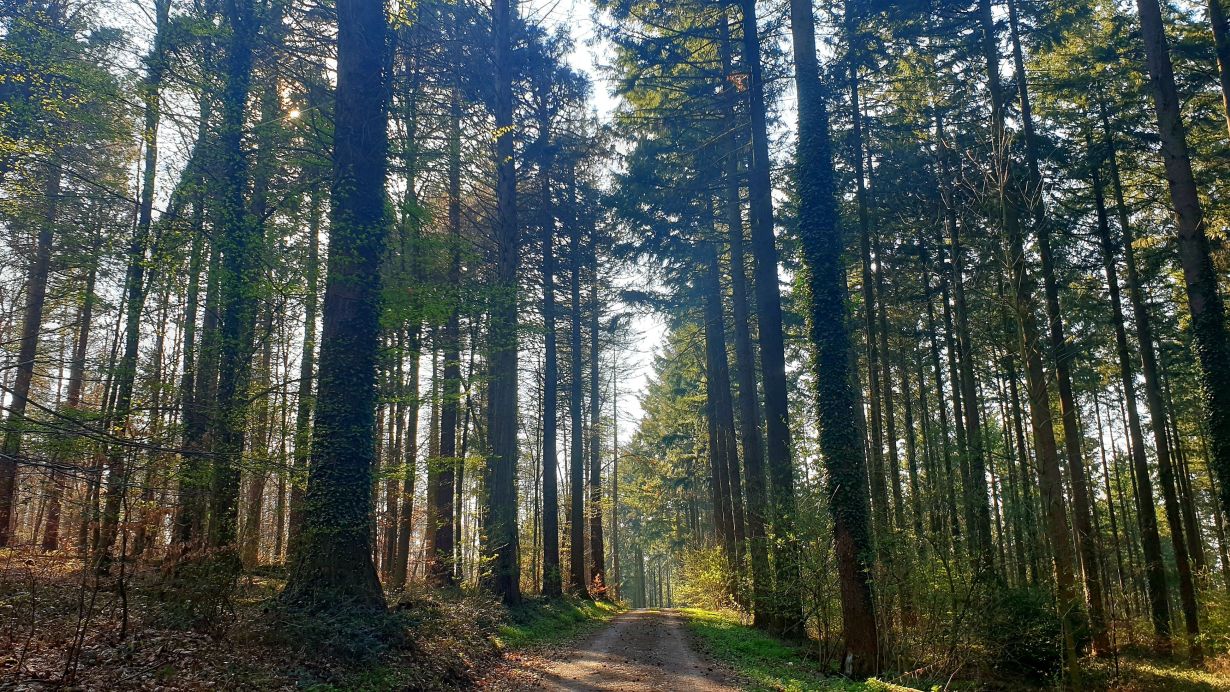Terrestrial carbon sinks can mitigate the greenhouse effect. Researchers of Karlsruhe Institute of Technology (KIT) and other research institutions pooled various data sources and found that European carbon storage takes place mainly in surface biomass in East Europe. However, changes of land use in particular have caused this carbon sink to decline. The researchers report in Communications Earth & Environment. (DOI: 10.1038/s43247-023-00893-4)
Forests can bind large amounts of carbon on the land surface. In this way, they decisively contribute to reducing net greenhouse gas emissions. For some areas, however, data are still lacking. In East Europe, in particular, the network of installed measurement stations is very loose, such that little has been known about carbon flows and their drivers there. “But East European forests have a great potential as a long-term carbon sink,” says Karina Winkler from the Atmospheric Environmental Research Department of the Institute of Meteorology and Climate Research (IMK-IFU), KIT’s Campus Alpine in Garmisch-Partenkirchen. “Political upheavals in East Europe, however, have caused big changes of land use. Moreover, climate change there increasingly affects the forests. This unique interaction of socioeconomic and climatic factors influences the carbon sinks.”
Study Area Covers 13 Countries
Researchers of IMK-IFU’s Land Use Change & Climate Group, together with researchers from other European research institutions, have now recalculated the carbon sinks in East Europe. The area studied covers 13 countries, from Poland in the West to the Russian Ural Mountains in the East, from the Kola peninsula in the North to Rumania in the South. Calculations are based on different data sources, such as models, satellite-based biomass estimates, forest inventories, and national statistics.
“From the datasets, we concluded that East Europe stored most of Europe’s carbon from 2010 to 2019,” Winkler says. Comparison of carbon balances revealed that the land surface in East Europe bound about 410 million tons of carbon in biomass every year. This corresponds to about 78 percent of the carbon sink of entire Europe. The biggest carbon sinks can be found in border region of Ukraine, Belarus and Russia, in the southern Ural Mountains, and on the Kola peninsula.
Timber Extraction Has the Biggest Influence on the Carbon Sink in East Europe
However, data also show that carbon absorption in East Europe with time was anything but constant and has even declined. The East European carbon sink is shrinking. To determine the causes, researchers compared the trends of carbon changes with factors of land use, such as land conversion for agriculture, timber extraction, and share of abandoned agricultural areas, as well as with environmental factors, such as temperature, precipitation, soil humidity, and carbon dioxide (CO2) and nitrogen concentrations in the atmosphere.
They found that environmental impacts, such as the change in soil humidity, have a big influence on the carbon balance. Still, spatial patterns of the carbon sink in East Europe can be explained mainly by land use changes. From 2010 to 2019, timber extraction had the biggest influence on the land-based carbon sink in East Europe. Data analysis suggests that an increase in timber extraction in West Russia and reduced forest growth on former agricultural areas caused the carbon sink in East Europe to decline between 2010 and 2019.
The researchers are now working to predict how East European forests and their important carbon sinks will develop under the influence of land use changes and climate change in future. In view of the increasing number of extreme weather events and reduced water availability, however, they fear that the East European carbon sink will continue to decline.
Original Publication (Open Access):
Karina Winkler, Hui Yang, Raphael Ganzenmüller, Richard Fuchs, Guido Ceccherini, Grégory Duveiller, Giacomo Grassi, Julia Pongratz, Ana Bastos, Anatoly Shvidenko, Arnan Araza, Martin Herold, Jean-Pierre Wigneron & Philippe Ciais: Changes in land use and management led to a decline in Eastern Europe’s terrestrial carbon sink. Communications Earth & Environment, 2023. DOI: 10.1038/s43247-023-00893-4
https://www.nature.com/articles/s43247-023-00893-4
Details on the KIT Climate and Environment Center
In close partnership with society, KIT develops solutions for urgent challenges – from climate change, energy transition and sustainable use of natural resources to artificial intelligence, sovereignty and an aging population. As The University in the Helmholtz Association, KIT unites scientific excellence from insight to application-driven research under one roof – and is thus in a unique position to drive this transformation. As a University of Excellence, KIT offers its more than 10,000 employees and 22,800 students outstanding opportunities to shape a sustainable and resilient future. KIT – Science for Impact.

